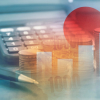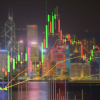Insights
Harvesting Growth, Harnessing Change - Monthly Insights: Asian Equity-January 2023
Asian equities made a strong start to 2023, with the MSCI AC Asia ex Japan Index returning 8.2% in US dollar (USD) terms in January, supported by a rebound in investor sentiment towards China.
Navigating Japan Equities: Monthly Insights from Tokyo (February 2023)
This month we assess the trends in wages and salaries with significant change potentially in progress; we also discuss how changes at the BOJ may affect the market.
Japan Value Insights: CDMOs and health-related social needs
Contract development and manufacturing organisations (CDMOs) could play an important role in addressing health-related needs as society seeks rapid solutions to issues such as an increase in refractory diseases.
Balancing Act-Monthly insights: Multi-Asset Team-January 2023
In our view, the change from dollar strength to relative weakness is meaningful for the shift in relative growth prospects, favouring the rest of the world over the US.
Consumption potential in China’s lower-tier cities
While consumer sentiment may be weaker across China presently, we believe that the long-term outlook for the country’s consumer sector remains attractive. China’s lower-tier cities are stepping up to fuel the growth engine that once relied heavily on megacities.
Future Quality Insights -January 2023- The path to clean, secure and affordable energy
Clean, secure and affordable energy is likely to be one of the major challenges of this decade. Given we need abundant energy to complete the energy transition, we believe fossil fuel companies that are actively enabling transition to low carbon society can be part of the solution. They often understand how to deliver global energy at scale and have the balance sheets capable of enabling the transition to clean energy.
Harvesting Growth, Harnessing Change - Monthly Insights: Asian Equity-December 2022
Chinese shares outperformed in December as the country continued to move away from its zero-COVID policy while markets in Taiwan and South Korea slumped amid concerns towards the global economy. In ASEAN, Thailand led the region as the country is expected to be one of the biggest beneficiaries of a potential return of Chinese tourists.
On the Ground in Asia-Monthly Insights: Asian Fixed Income-December 2022
We expect global inflation to ease and global growth to weaken in 2023; we also think that the Fed is likely to pause hiking rates by the first quarter of 2023. Against this backdrop, we are broadly constructive on regional bonds as most Asian central banks could be nearing the end of their rate hike cycles.
Navigating Japan Equities: Monthly Insights from Tokyo (January 2023)
We discuss the Bank of Japan’s unexpected move to tweak its yield curve control scheme and the potential implications; we also provide a brief overview of some of the factors seen impacting Japan equities in 2023.
Harvesting Growth, Harnessing Change - Monthly Insights: Asian Equity-November 2022
Asian stocks rebounded strongly in November after Federal Reserve Fed Chair Jerome Powell pointed to slower pace of monetary policy tightening and lifted market sentiment. All Asian markets ended in positive territory, with China in the lead with a month-on-month (MoM) gain of 29.7%.












